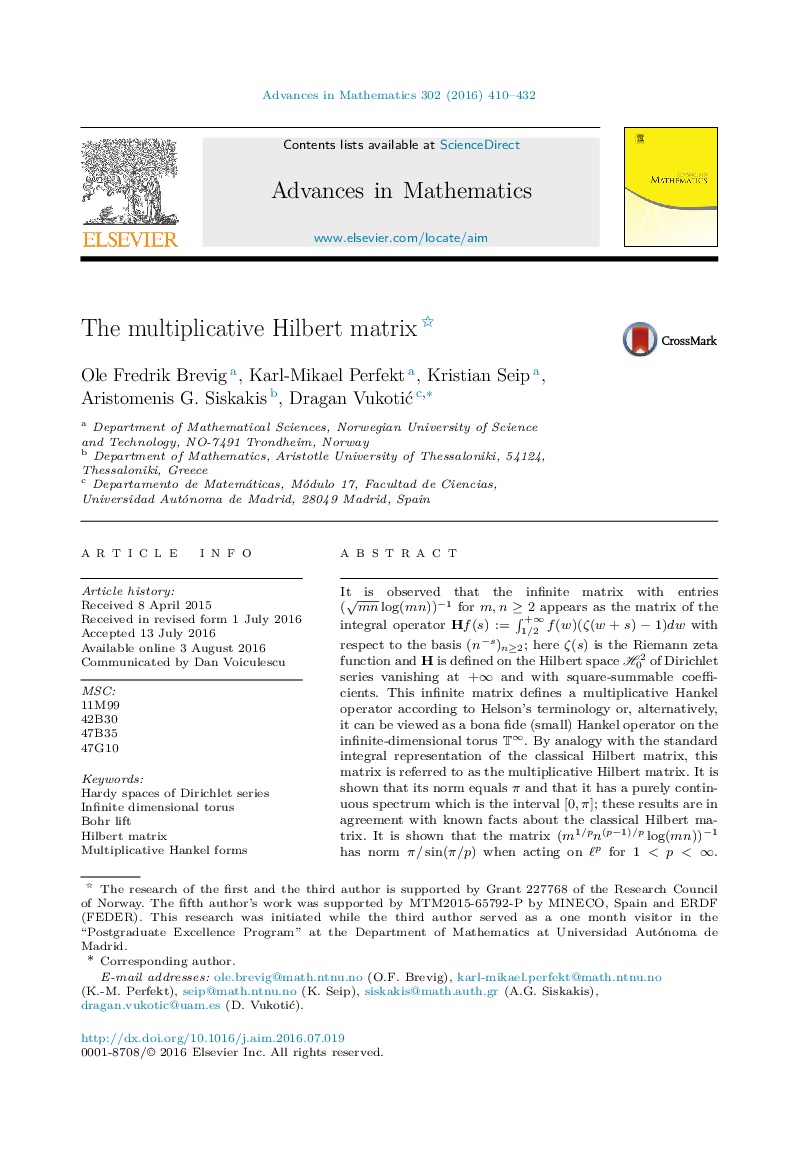| Article ID | Journal | Published Year | Pages | File Type |
|---|---|---|---|---|
| 6425132 | Advances in Mathematics | 2016 | 23 Pages |
It is observed that the infinite matrix with entries (mnlogâ¡(mn))â1 for m,nâ¥2 appears as the matrix of the integral operator Hf(s):=â«1/2+âf(w)(ζ(w+s)â1)dw with respect to the basis (nâs)nâ¥2; here ζ(s) is the Riemann zeta function and H is defined on the Hilbert space H02 of Dirichlet series vanishing at +â and with square-summable coefficients. This infinite matrix defines a multiplicative Hankel operator according to Helson's terminology or, alternatively, it can be viewed as a bona fide (small) Hankel operator on the infinite-dimensional torus Tâ. By analogy with the standard integral representation of the classical Hilbert matrix, this matrix is referred to as the multiplicative Hilbert matrix. It is shown that its norm equals Ï and that it has a purely continuous spectrum which is the interval [0,Ï]; these results are in agreement with known facts about the classical Hilbert matrix. It is shown that the matrix (m1/pn(pâ1)/plogâ¡(mn))â1 has norm Ï/sinâ¡(Ï/p) when acting on âp for 1
